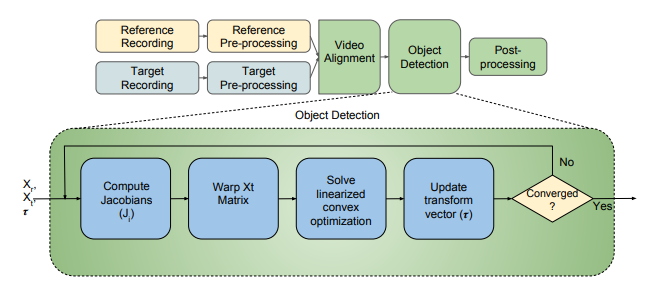- ALL COMPUTER, ELECTRONICS AND MECHANICAL COURSES AVAILABLE…. PROJECT GUIDANCE SINCE 2004. FOR FURTHER DETAILS CALL 9443117328


Projects > ELECTRONICS > 2020 > IEEE > DIGITAL IMAGE PROCESSING
This paper presents a special matrix factorization based on sparse representation that detects anomalies in video sequences generated with moving cameras. Such representation is made by associating the frames of the target video, that is a sequence to be tested for the presence of anomalies, with the frames of an anomaly-free reference video, which is a previously validated sequence. This factorization is done by a sparse coefficient matrix, and any target-video anomaly is encapsulated into a residue term. In order to cope with camera trepidations, domain transformations are incorporated into the sparse representation process. Approximations of the transformed-domain optimization problem are introduced to turn it into a feasible iterative process.
Sparse and low-rank decompositions
The proposed method decomposes a possibly anomalous target video into a sparse combination of the frames from an anomaly-free reference video plus a sparse residual that corresponds to the possible anomalies of interest. The basic assumption for the algorithm to work efficiently is that the camera’s poses and trajectories during the target and reference video acquisitions are similar, in such a way that the information in the frames of the target video is mostly contained in the frames from the reference video. Under these circumstances, the decomposition of the target frames as a sparse combination of the reference frames can be achieved by linear convex optimization. Unfortunately, in real world scenarios, the camera trembles as it moves, and thus its pose and trajectory during recording of the reference video may present variations relative to the recording of the target video. A way to cope with this issue is to add to the optimization process an additional non-linear domain-transformation term, that will require an iterative linearization approximation. This domain transformation enables the method to find a better correspondence between reference and target video frames, thus yielding less false detections as result of the algorithm.
BLOCK DIAGRAM
